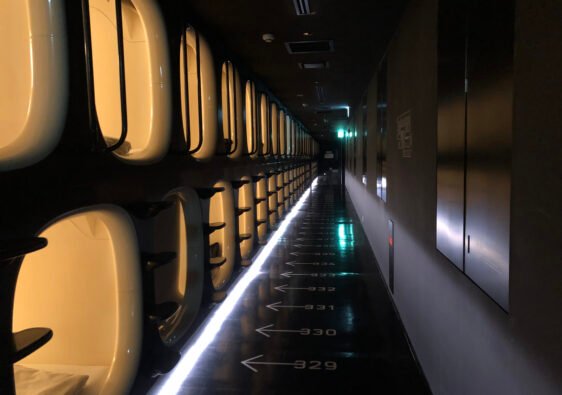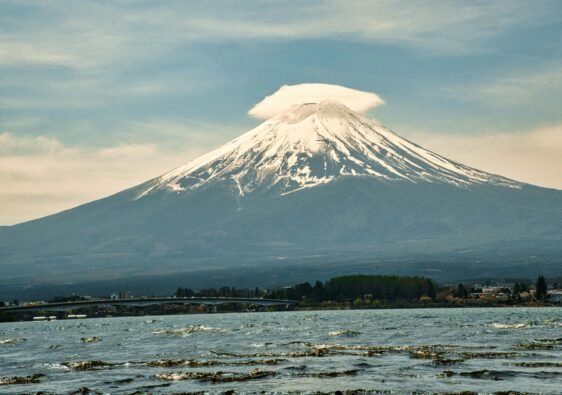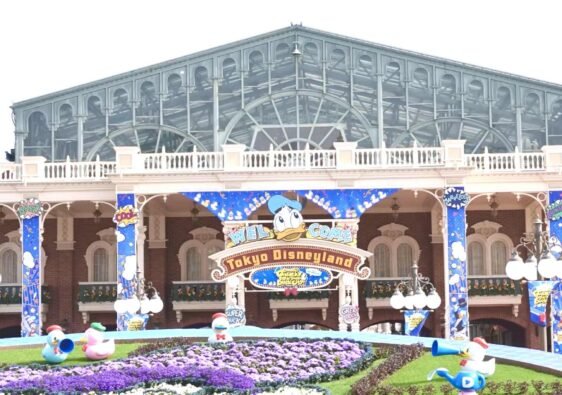They say that anyone who visits Japan — whether a local or a traveler from far away — dreams of seeing Kyoto at least once. I was no exception. The city’s quiet charm, with its peaceful temples, narrow wooden streets, and the soft shuffle of geisha footsteps, had lived in my imagination for years.
What I didn’t realize back then was that Kyoto used to be Japan’s capital — from 794 all the way until 1868. Honestly, I had no clue about that part of history. But I kept hearing my foreign friends talk about Kyoto — especially the golden reflection of Kinkakuji Temple shimmering in the pond. The way they described the feeling of being there, the way their faces lit up when they talked about it… I knew I had to experience it for myself. So I added it right to the top of my travel bucket list.
Kyoto may be a dream destination, but I was determined to make it a budget-friendly one. My goal has always been to prove that even with a tight budget, you can explore every corner of Japan. That’s why I travel with the motto: Low Cost, High Adventure.
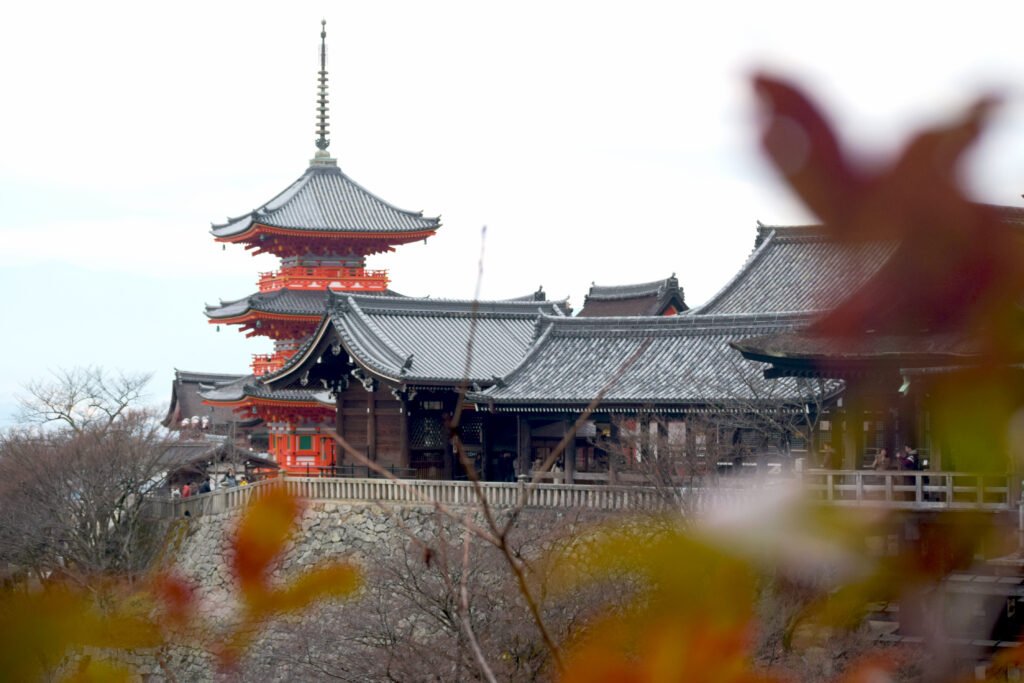
From Tokyo TO Kyoto
With three ways to reach Kyoto from Tokyo — the domestic flight, the iconic Shinkansen, and the highway bus — the bus was the obvious choice for a traveler like me trying to stretch every yen. It wasn’t glamorous, but it was practical.
I chose the last highway bus departing at 24:05 from the south exit of Shinjuku Station. If you want to book or know details of the bus schedule, then here it is Highway Bus Tickets. There was something oddly romantic about the idea — sneaking out of Tokyo in the dead of night, heading towards the unknown while the rest of the city slept. The bonus? I saved on one night of accommodation.
The bus was warm and quiet, dimly lit, and the rhythmic hum of the road lulled me into a shallow sleep. No flashy service, no high-speed thrills — just the promise of a new city at dawn.
We rolled into Kyoto Station as the sky shifted from deep blue to soft gold. The morning air was crisp, and the city was just beginning to wake. I stepped out of a Kyoto station.

Early Morning Coffee On Kyoto
Outside a Kyoto station, a coffee shop had just opened. The warmth of that first sip of freshly brewed coffee against the chilly morning — unforgettable. I sat by the window, watching Kyoto come alive. Locals biked past in silence. A temple bell rang somewhere far off. And in that moment, I felt like I belonged here.
With the help of Wi-Fi and caffeine, I quickly found a budget capsule hotel not far from Gion. It was nothing fancy, but it was clean, quiet, and under my budget. A perfect base I pulled out my notebook and began planning my day:
- Morning: Walk to the Fushimi Inari Shrine
- Afternoon: Kiyomizu-dera temple
- Evening: Gion District
Day-2
- Day: Arashiyama Bamboo Grov
- Afternoon: Kinkakuji Temple
- Evening: Night street around Kyoto and back to Tokyo
While sketching a road map in my diary with my sip of coffee, I didn’t realize the shop was a bit crowded. So I decided to leave, put my diary inside the bag, grab a phone, and head toward the counter to take one-day Kyoto bus pass. Again, to save some extra cash, cause this one-day Kyoto bus pass allows me to ride unlimited times within a day.
Fushimi Inari-Taisha Thousand Tori At – Kyoto
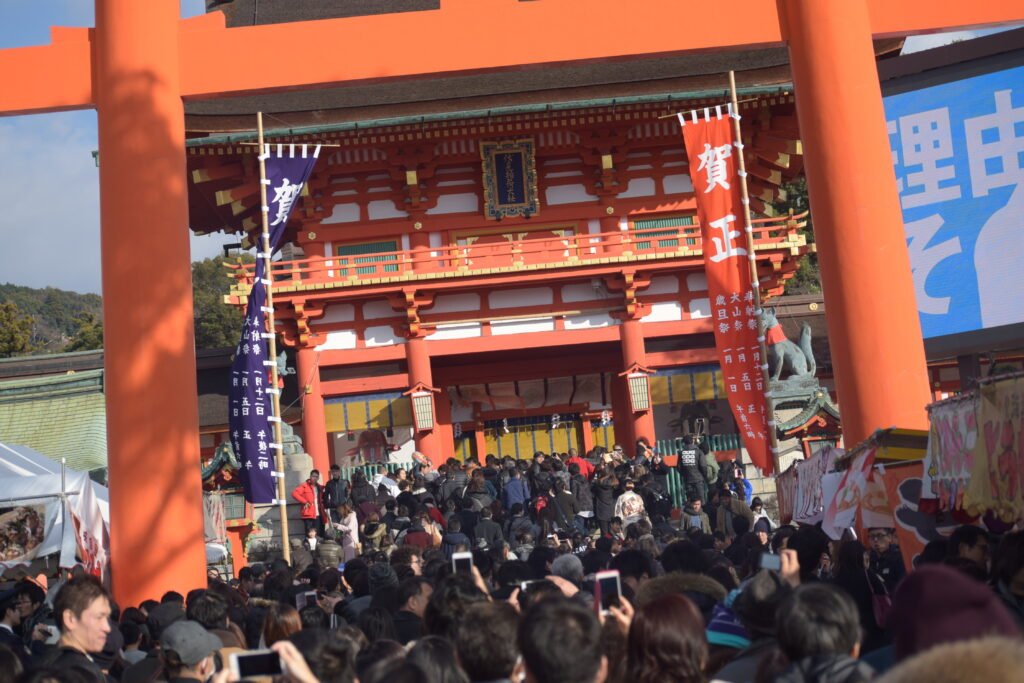
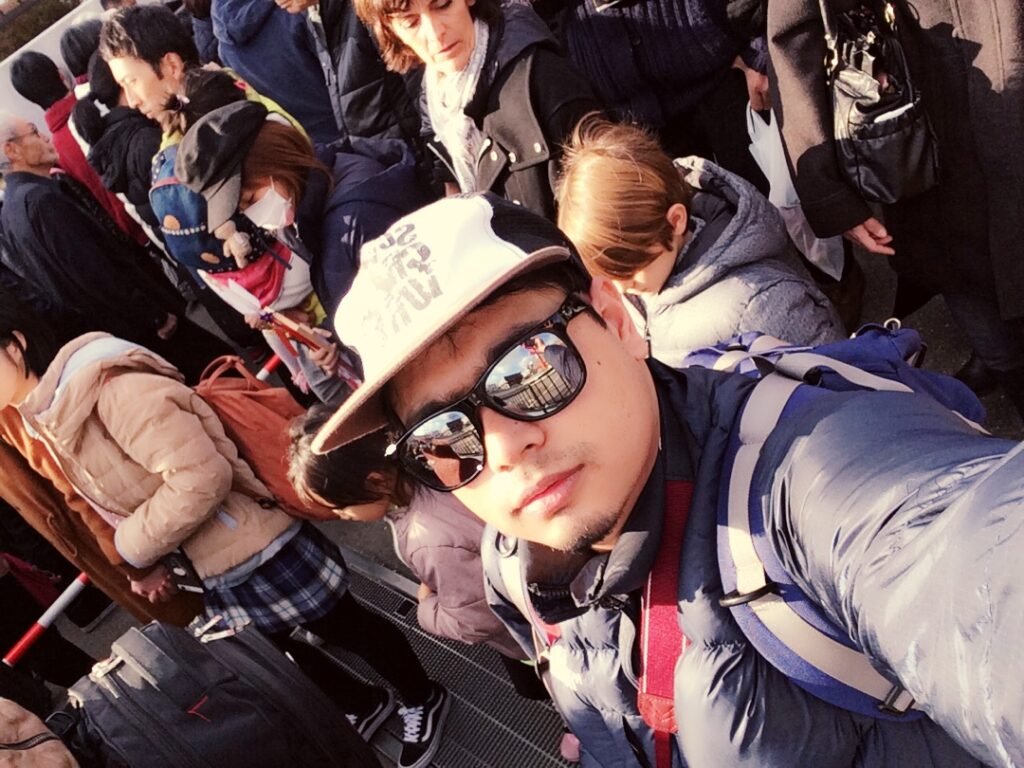
It was the beginning of 2017 when I found myself swept into a sea of people at Fushimi Inari-Taisha, or as locals affectionately call it, O-Inari-san. Visiting a shrine during New Year is a deeply rooted tradition in Japan — families come together, dressed warmly, to pray for luck, health, and fresh beginnings.
I hadn’t expected such an overwhelming crowd. The pathway leading through the iconic red torii gates looked more like a slow-moving river of people. Every few steps, I’d pause — not by choice, but by the sheer volume of visitors.
Yet there was something magical in the chaos. The scent of sweet sake in the air, the soft clang of coins thrown into offering boxes, and the gentle murmur of wishes whispered in front of altars. I felt like I was not just a visitor, but part of a living tradition.
Kiyomizu-Dera, Kyoto World Heritage Temple
Perched on a slope in eastern Kyoto, Kiyomizu-Dera felt different — grand and open, almost like a wooden ship floating above the trees. It’s no wonder it’s listed as part of the UNESCO World Heritage of Ancient Kyoto. The atmosphere buzzed with energy, but it didn’t feel chaotic — just… alive.

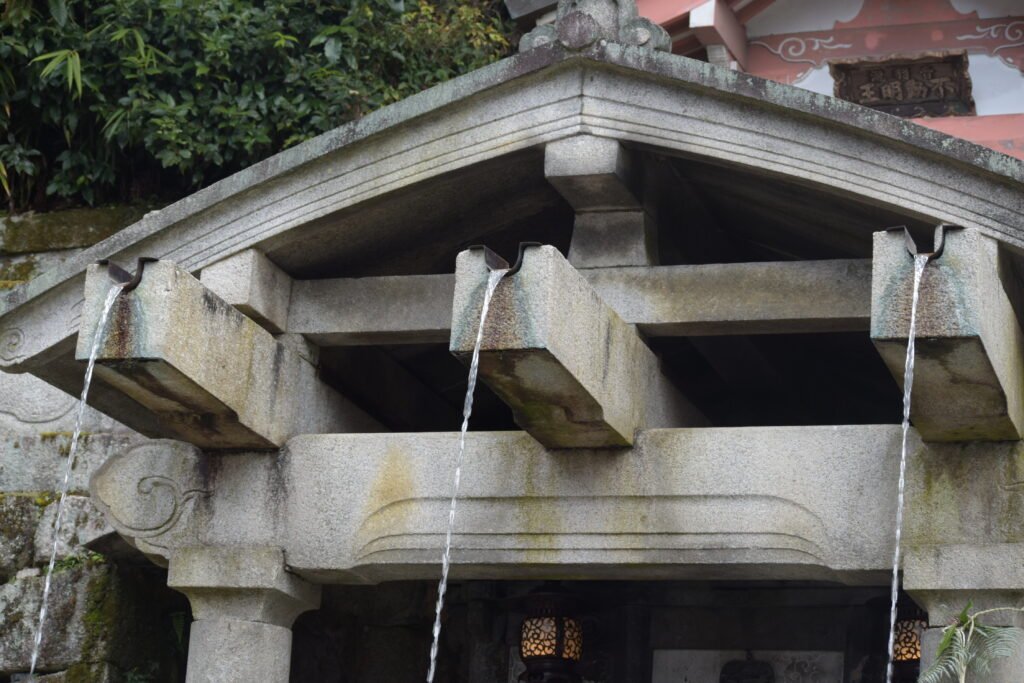
From the famous wooden stage, I gazed out across the city, softened by winter haze. The trees below were bare, resting. A part of me imagined how different this view must look during April’s cherry blossoms, or in the fiery momiji leaves of autumn. But even without the flowers, there was a quiet elegance to it all — the sound of water trickling, the soft chants, the scent of incense in the cold air.
I took a moment at the Otowa Waterfall below, where visitors sip from one of three streams, each said to grant either longevity, success, or love. I didn’t rush. I just watched — people waiting patiently, hoping that a small sip of water might bless their year.
Gion District Place To Wander In Kyoto

In Kyoto, if you want to wander, the Geisha district is one of them. While walking Gion district, I found myself in the old era. The road is paved with stones, and buildings are traditionally old but well-managed. Walking here and there, looking at one building after another, I did not notice it was already evening. I also found lots of ochaya (tea house), and by the way Shirakawa area is quieter than Hanami-koji Street. You can choose the place to walk according to your nature. I am quite a silent person, I like quiet places rather than crowded so I love Shirakawa.
Although I was tired, I decided to go to my hotel on walking because time will never return and the evening, the environment was so good I thought I wouldn’t miss that moment, so I wandered here and there putting headphones listening to soft music walking alone looking google map toward destination of my hotel.
Arashiyama Bamboo Grove
I woke up later than planned — around 8 a.m. After a soft, refreshing shower, I grabbed a large coffee from a nearby Seven-Eleven combini, the kind that somehow tastes even better when you’re half-asleep and full of wanderlust.

Coffee in hand, I headed straight to Arashiyama Bamboo Grove — one of Kyoto’s most photographed places, but still, nothing can prepare you for the feeling of actually being there.
The path itself is short — about 500 meters — but it feels timeless. Towering stalks of bamboo lined both sides like nature’s own cathedral, swaying gently in the morning breeze. I could hear the whispers of the wind through the leaves, the soft crunch of gravel beneath my shoes, and even the faint scent of green in the air. It was oddly soothing — like the forest was breathing around me.

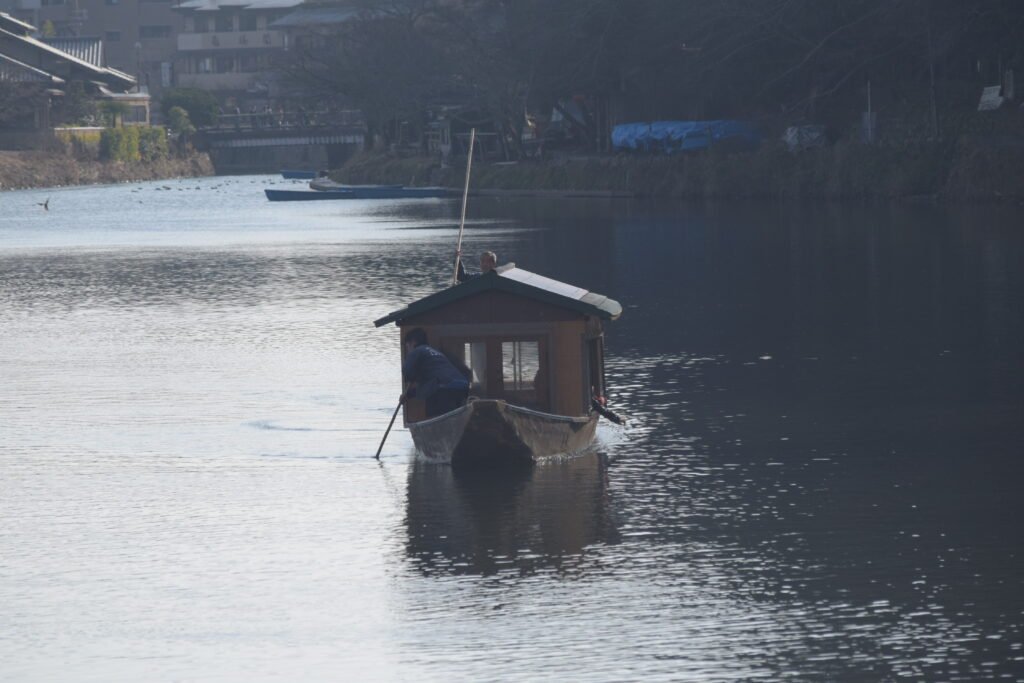
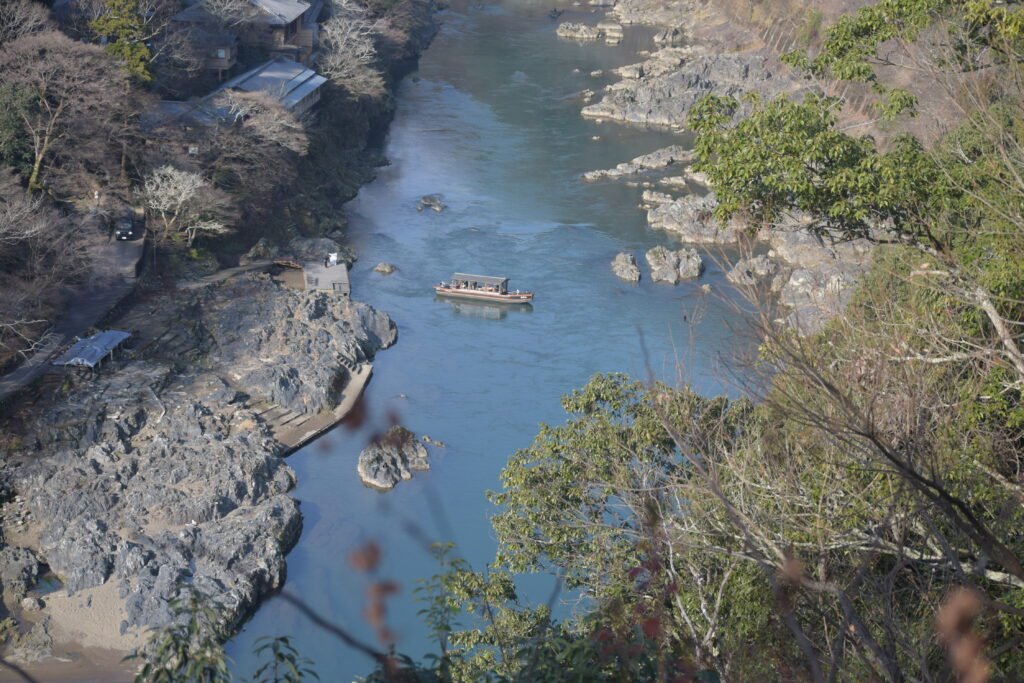
After the grove, I followed a small side trail that wound upward. Fewer people went this way, but it was worth it. From the top, I caught a stunning view of the Arashiyama Mountains, calm and regal in the distance, with the Hozu-gawa River winding far below.
Although it was January, I imagined the hills glowing in orange and yellow, the bamboo grove painted with warm light. In that season, I thought it must feel like stepping into a dream.
Kinkaku-ji Golden Temple Of Kyoto

By the time I reached Kinkaku-ji, it was already afternoon. My time in Kyoto was ticking down, and the thought of the return trip to Tokyo lingered in the back of my mind. Still, I couldn’t leave without seeing the Golden Temple — one of Kyoto’s most iconic sights.
Officially known as Rokuon-ji Temple, Kinkaku-ji felt like something from a storybook. The moment I stepped through the entrance and caught my first glimpse of the shimmering pavilion, I stopped.
There it stood — perfectly still, wrapped in golden light, floating above its reflection in the quiet pond. The water was so calm, it created a flawless mirror image. It was as if the temple existed twice: once in reality, and once in a dream just beneath the surface.
Silent Goodbye To Kyoto
Finally, I still had a few hours left before my return to Tokyo. Just like the night before, I had booked the late-night highway bus — a simple way to save on accommodation and stretch my budget a little further.
Before heading back to the station, I stopped at a small restaurant nearby. The warm glow inside was inviting after a day full of walking and exploring. I savored a quiet dinner, enjoying authentic Japanese flavors — the kind of meal that feels like a gentle reward after a long journey.
As I ate, I reflected on the day: from sunrise at Fushimi Inari, peaceful moments at Kiyomizu-Dera and Arashiyama, to the golden calm of Kinkaku-ji — Kyoto had been generous with its beauty and stories.
With a full heart and a tired body, I made my way back to the bus stop. The city lights faded behind me as I settled in for the night ride home, already dreaming of my next adventure.
